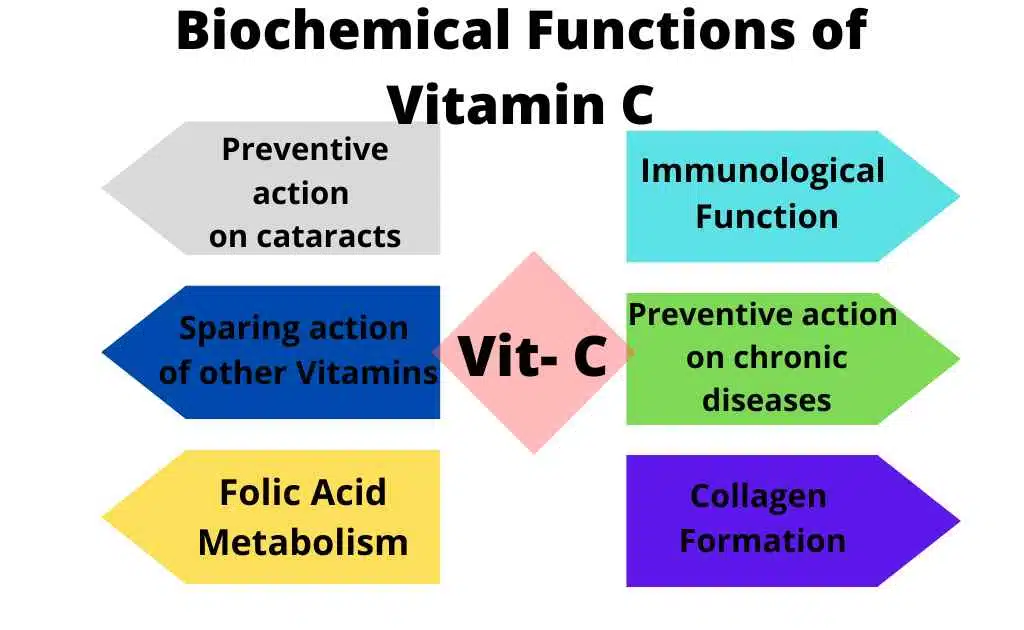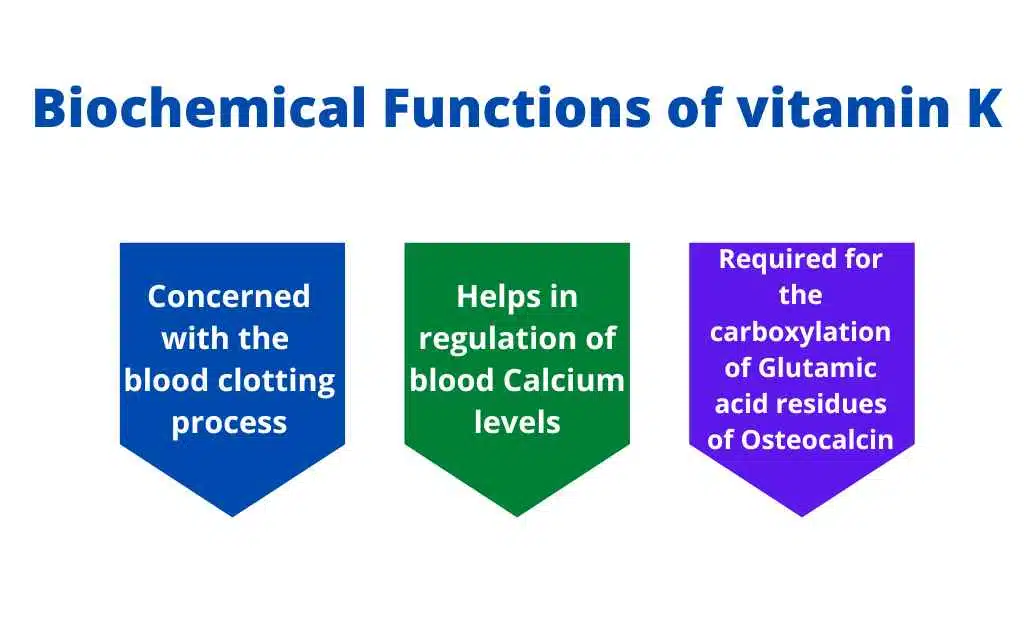What is Water Soluble Vitamins? Types, Functions, and Examples
There are a few different types of vitamins that your body needs to function properly. Water-soluble vitamins include vitamin C and B complex vitamins. These vitamins are essential for good health, but they are also unstable and can be easily destroyed by exposure to water, heat, air, or light.
Vitamin C
Vitamin c, also known as ascorbic acid, is found in many fruits and vegetables. To maintain optimal health and prevent deficiencies, it is important to consume a good source of vitamin c daily. The body only stores small amounts of vitamin C, so it needs to be replenished regularly.
Functions Of Vitamin C:
Vitamin c is a vital nutrient for many different bodily functions. It helps with the synthesis of collagen in connective tissue, the conversion of cholesterol to bile acids, and the enhancement of iron bioavailability.
As an antioxidant, it also protects the body against pollutants. In addition, vitamin c is essential for healthy cell development and the formation and maintenance of intercellular cement substances.
Sources Of Vitamin C
Vitamin C can be found in many food sources, such as leafy greens, berries, citrus fruits, and more.
Deficiency:
A deficiency in vitamin C can result in issues with bone formation and growth in infants and children.
B-Complex Vitamins
The eight b-complex vitamins include Thiamine (B1), Riboflavin (B2), niacin (B3), pyridoxine (B6), cyanocobalamin (B12), Folic Acid, Biotin (B7), and Pantothenic acid. They are water-soluble and therefore easily lost in the cooking water.
The exception to this rule is Niacin, which is less susceptible to heat damage. However, all other b vitamins are affected to some degree by exposure to heat, oxygen, light, or alkaline conditions.
Sources of B-Complex Vitamins
Certain foods like walnuts, roots and tubers, cabbage, legumes, molasses, whole grains, contain a moderate amount of this vitamin.
Thiamine (Vitamin B1)
Thiamine, also called B1, is an important vitamin for many different body functions. Deficiencies in thiamine can have far-reaching effects on the body, yet very little of this vitamin is stored in the body. Thiamine depletion can happen within 14 days.
Thiamine is integrally involved as a coenzyme in the catabolism of carbohydrates to yield energy.
Functions of Thiamine
- Thiamine is important for the nervous system, hydrochloric acid production, and digestion. It is also linked to appetite and growth in children.
Food sources of Thiamine:
Sunflower seeds, peanuts, wheat bran, beet liver, pork, seafood, egg yolk, beans whole grains, and yeast contain good amounts of thiamine.
Riboflavin (Vitamin B2)
Riboflavin is a b-complex vitamin that helps with the metabolism of carbohydrates, fats, and protein.
Functions of Riboflavin:
- It is an important mineral that the body needs for many functions.
- it helps the body use oxygen and metabolize amino acids, fatty acids, and carbohydrates.
- Riboflavin is important for several bodily functions, including red blood cell formation, antibody production, cell respiration, and growth. Additionally, Riboflavin may help to prevent or treat cataracts.
Food sources of Riboflavin:
Riboflavin is found in high quantities in organ meats, nuts, cheese, eggs, milk, and lean meat. It is also available in good quantities in green leafy vegetables, fish, legumes, whole grains, and yogurt.
Niacin (B3)
Niacin is also called nicotinic acid or niacin amide and can be manufactured by the body. Niacin is derived from two compounds, nicotinic acid, and niacin amide.
Functions of Niacin:
Niacin is important for helping the body create energy from nutrients like carbohydrates, fats, and proteins. It also helps to keep our skin healthy. Niacin is found in foods like meat, fish, and fortified cereals, or you can take it as a supplement.
Food sources of Niacin:
Liver, lean meat, fish, nuts, cereals, legumes, asparagus, milk, green leafy vegetables, and fish are sources of niacin.
Pyridoxine (Vitamin B6)
Pyridoxine is part of the b group of vitamins and is water-soluble and is required for both mental and physical health.
Functions of Pyridoxine:
It helps the body to metabolize proteins, fats, and carbohydrates, and it also helps to maintain serum levels of sodium and potassium. Additionally, pyridoxine is linked to cancer immunity and fights the formation of the toxic chemical homocysteine.
Food sources of Pyridoxine
Food sources of pyridoxine include brewer’s yeast, eggs, chicken, carrots, fish, liver, kidney, peas, wheat germ, and walnuts. Other foods that contain moderate amounts of this vitamin include roots and tubers, cabbage, legumes, molasses, and whole grains.
Folic Acid (Vitamin B9)
Iron-containing substance in hemoglobin is crucial for oxygen transport.
Function of Folic Acid
- Folic acid is very important in the development of the nervous system of a developing fetus.
Food sources of Folic Acid:
Folic acid can be found in a variety of foods, such as spinach and broccoli, whole grains, liver, kidney, egg, and yeast. This nutrient is important for pregnant women, as it can help prevent certain birth defects.
Cyanocobalamin (Vitamin B12)
Cyanocobalamin is referred to as the energy vitamin. It is a very widely researched vitamin and is used in supplementation to a very large degree.
Functions of Cyanocobalamin:
- It is required in the metabolism of fats, proteins, and carbohydrates.
- It is needed in the manufacture of red blood cells and the maintenance of red blood cells.
- It stimulates appetite and promotes growth.
Food sources of Cyanocobalamin:
There are many foods that are rich sources of vitamin B12, including liver, organ meat, muscle meat, shellfish, egg, cheese, and fish. The body can also manufacture this vitamin. Milk is a good source of vitamin B12, but processing milk can destroy the vitamin.
Biotin (Vitamin B7)
Biotin present in foods is not affected by exposure to light. Biotin is also produced by bacteria in the intestine.
Function of Biotin:
- Biotin is involved in carbohydrate and lipid metabolism.
- Biotin is also indicated for healthy hair and skin, healthy sweat glands, nerve tissue, and bone marrow.
- Biotin also helps in maintaining a steady blood sugar level.
Food sources of Biotin:
Biotin is widely distributed in both animal and plant foods. Liver, kidney, egg, yolk, milk, and tomatoes are rich sources.
Pantothenic Acid (Vitamin B6)
Pantothenic acid often called the “anti-stress vitamin,” is one of the b vitamins. This vitamin is produced in the body by intestinal flora.
Functions of Pantothenic Acid:
Some of its key functions include:
- Pantothenic acid plays an important role in the secretion of hormones.
- Pantothenic acid is also used in the release of energy as well as the metabolism of fat, protein, and carbohydrates.
- It is used in the synthesis of lipids, neurotransmitters, and hemoglobin.
Food sources of Pantothenic Acid:
Beef, brewer’s yeast, egg, fresh vegetables, kidney, legumes, liver, mushrooms, nuts, pork, royal jelly, saltwater fish, whole rye flour, and whole wheat contain this vitamin.







Leave a Reply